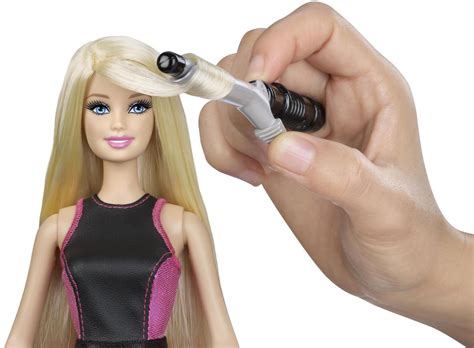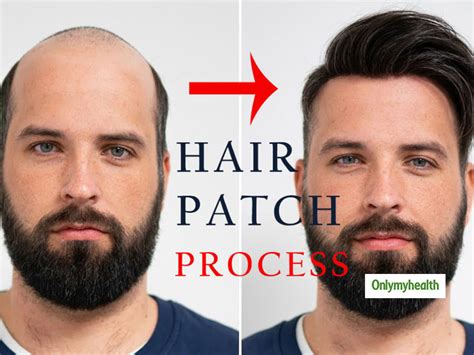Bald head patches, also known as alopecia areata, can be a frustrating and embarrassing experience. But with the right knowledge and treatment, you can regain your confidence and reclaim your scalp.

Types of Bald Head Patches
There are numerous types of bald head patches, each with its unique characteristics:
1. Alopecia Totalis (Total Baldness)
This condition results in complete hair loss on the scalp. It affects approximately 0.1% of the population.
2. Alopecia Universalis (Complete Baldness)
Similar to alopecia totalis, this condition causes hair loss on the scalp as well as other areas of the body, including the eyebrows, eyelashes, and pubic hair. It affects less than 0.05% of the population.
3. Ophiasis (Snake-Like Baldness)
This type of hair loss creates a distinctive snake-like pattern of baldness that winds around the sides and back of the scalp.
4. Androgenetic Alopecia (Male- and Female-Pattern Baldness)
This is the most common type of hair loss, affecting both men and women. It typically begins as a receding hairline in men and diffuse thinning on the top of the head in women.
Causes of Bald Head Patches
The exact cause of bald head patches is unknown, but it is believed to involve a combination of genetic and environmental factors:
1. Autoimmune Disorders
In alopecia areata, the body’s immune system mistakenly attacks the hair follicles, leading to hair loss.
2. Genetics
Family history plays a significant role in the development of bald head patches, particularly androgenetic alopecia.
3. Hormonal Changes
Changes in hormone levels, such as those experienced during pregnancy, menopause, or certain medical conditions, can trigger hair loss.
4. Thyroid Problems
An underactive or overactive thyroid gland can affect hair growth and lead to bald head patches.
5. Medications
Certain medications, such as chemotherapy drugs, blood thinners, and antidepressants, can cause hair loss as a side effect.
6. Infection
Bacterial or fungal infections of the scalp can lead to hair loss and bald head patches.
7. Stress
Acute or chronic stress can trigger hair loss in some individuals.
Risk Factors for Bald Head Patches
Certain individuals are at a higher risk of developing bald head patches:
1. Family History
People with a family history of alopecia are more likely to develop the condition.
2. Autoimmune Diseases
Those with autoimmune diseases, such as lupus or rheumatoid arthritis, are at an increased risk of alopecia areata.
3. Age
Androgenetic alopecia typically begins in middle age, although it can occur earlier.
4. Gender
Men are more likely to develop androgenetic alopecia than women.
Symptoms of Bald Head Patches
Bald head patches can present with various symptoms:
1. Sudden Hair Loss
In alopecia areata, hair loss occurs suddenly and may involve round or irregular patches.
2. Patchy Baldness
Androgenetic alopecia typically leads to patchy hair loss on the scalp.
3. Thinning Hair
Hair thinning is a common symptom of androgenetic alopecia and other types of bald head patches.
4. Scalp Sensitivity
Some individuals may experience scalp sensitivity or tenderness around the bald patches.
5. Nail Changes
In some cases, bald head patches can be associated with nail changes, such as pitting or discoloration.
Investigation and Diagnosis of Bald Head Patches
Diagnosis of Bald Head Patches
Proper diagnosis is crucial for effective treatment. A healthcare professional may perform the following:
1. Physical Examination
The doctor will examine your scalp, hair, and nails to assess the type and extent of hair loss.
2. Medical History Review
The doctor will inquire about your medical history, including any medications you are currently taking.
3. Blood Tests
Blood tests may be recommended to check for underlying medical conditions that could be contributing to hair loss.
4. Scalp Biopsy
In some cases, a small sample of scalp tissue may be removed for examination under a microscope.
Treatment of Bald Head Patches
The treatment for bald head patches depends on the underlying cause and the severity of the condition:
1. Medications
Corticosteroids and immunosuppressant drugs can be used to treat alopecia areata and other autoimmune-related hair loss.
2. Minoxidil
This topical medication is approved to treat androgenetic alopecia and may promote hair growth.
3. Finasteride
This oral medication is also approved for androgenetic alopecia and can help slow down hair loss.
4. Laser Therapy
Low-level laser therapy (LLLT) may stimulate hair growth in some individuals with bald head patches.
5. Surgery
Hair transplantation surgery can be an option for severe and permanent hair loss.
6. Lifestyle Modifications
Managing stress, maintaining a healthy diet, and getting enough sleep can improve hair health.
Strategies for Living with Bald Head Patches
Living with bald head patches can be challenging, but there are strategies to help you cope:
1. Embrace Your Appearance
Accepting your hair loss and focusing on other positive aspects of your appearance can boost your confidence.
2. Hairpieces and Wigs
Hairpieces and wigs can help you conceal bald patches and regain your sense of self-esteem.
3. Scarves and Hats
Stylish scarves and hats can add a touch of personality while covering bald patches.
4. Support Groups
Joining support groups can provide you with emotional support and a sense of community.
Conclusion
Bald head patches can be a distressing experience, but with proper diagnosis and treatment, you can regain your hair and your confidence. Remember, you are not alone in this journey, and there are numerous resources and support available to help you achieve your hair goals.
